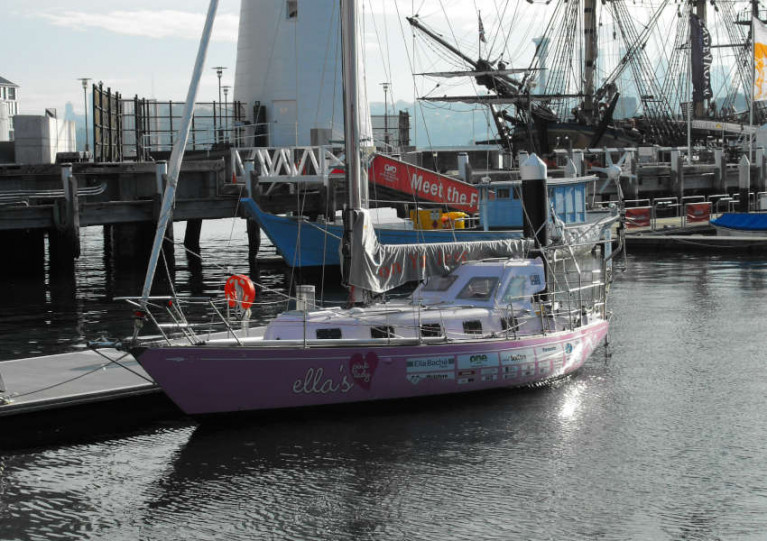Displaying items by tag: Jessica Watson
Claims That Would-Be Round-the-World Record-Setter’s Yacht Left to Rot by Maritime Museum
Mail Online is reporting that the yacht used by would-be round-the-world record-setter Jessica Watson has been left to rot outside the maritime museum where it has resided for almost a decade.
In 2009, then 16-year-old Watson, from Australia, sailed her yacht Ella’s Pink Lady around the globe in 210 days to unofficially become the youngest circumnavigator. The feat also saw her named as 2011’s Young Australian of the Year.
That same year the distinctive pink yacht was jointly purchased by Queensland and Australian governments for AUS$300,000, with the intention of a permanent exhibition dedicated to Watson’s feat at the Queensland Maritime Museum.
However, it’s now being claimed that Ella’s Pink Lady is lying all but abandoned on the museum’s grounds, with the hull leaking and riddled with mould.
And a marine auctions expert estimates that the famous boat is worth a fraction of its 2011 sale price. Mail Online has more on the story HERE.
In 2012, Watson’s claimed record was beaten by 16-year-old Dutch sailor Laura Dekker by some eight months, as previously reported on Afloat.ie.
Dutch Teen Breaks Record for Youngest Solo Round-The World Voyage
#WORLD RECORD - A Dutch teenager has become the youngest sailor to circumnavigate the world solo - following a court battle for the right to embark on the challenge.
Sixteen-year-old Laura Dekker sailed into harbour at Sint Maarten in the Caribbean on Saturday afternoon to complete her round-the-world voyage.
She arrived a year and two days after setting out, and beat the previous unofficial record held by Australian Jessica Watson by eight months, according to RTÉ News.
The feat is more remarkable in that Dekker sailed from port-to-port, staying at sea for at most three weeks at a time, whereas Watson voyaged non-stop.
But the adventure almost didn't happen, as Dekker and her father had to fight in a court in Utrecht for the right to attempt the record, as previously reported on Afloat.ie.
Dekker has originally planned to set out a year earlier, at the age of 14, but the court ordered her placed in the care of welfare officers on the grounds that she was too young to guarantee her safety at sea.
She finally won the court battle in July 2010 and set sail from Gibraltar the following month, though a change to her planned course saw the challenge officially begin in Sint Maarten in January 2011 instead.
However, the record will not be officially recognised by the Guinness Book of World Records nor the World Sailing Speed Record Council, which does not classify records by age.
RTÉ News has more on the story HERE.






























































